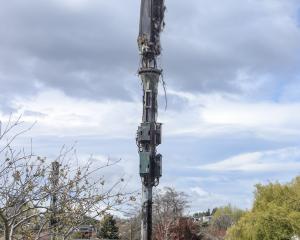
Rather like the well-known TV series, this involves new players coming to dominate by edging out the incumbents.

By the way, this is why gardening is such hard work. By trying to maintain preferred plants (mainly annuals and perennials), the gardener is in a constant battle against nature’s impetus to move on to a stable set of forest species.
One of the most significant features of the world’s old forests (our temperate rainforest, Amazon tropical rainforest, Boreal conifer forests) is that they lock up huge amounts of carbon in biomass and in dead organic matter in their litter and soils.
In an analysis of nearly 3000 of the world’s natural forests, the average amount of fixed carbon was over 230t of carbon per hectare, equivalent to 844t of carbon dioxide. For comparison, an aircraft on a return flight to London emits about 7t of CO2 per person, and there may be up to 300 passengers aboard.
In the battle against climate heating, with the burning of fossil fuels spewing carbon dioxide into the atmosphere, the more carbon that is locked up in forests, the better.
Forests are wonderful things, providing a huge range of products and services and a home for biodiversity. But nearly half of the world’s natural forests have been lost during human history.

There are pros and cons. Planted forests don’t support as much biodiversity and they contain only about half the carbon of natural forests. But they do amass carbon in photosynthesis at a similar or faster annual rate.
— Emeritus Professor Colin Townsend is president of the Wanaka Branch of the Royal Society Te Apirāngi (https://royalsocietywanaka.org/)
The Event
- WHAT: Dr Tim Payn (Principal Scientist at SCION, Rotorua) talks at the Wanaka Branch of the Royal Society.
- WHERE: Presbyterian Community Centre, 94 Tenby Street. All welcome.
- WHEN: May 31, 6pm
- ABOUT: Dr Payn will argue everything that can be made with fossil-based materials today can be made from a tree tomorrow. So planted forests are doubly valuable — yielding forest goods and at the same time replacing fossil-fuel products. He will explain what planted forests can provide in terms of traditional products such as timber, ecosystem services (clean water, recreation, carbon storage) and emerging products to replace fossil-based materials (aviation fuel, bioplastics).













